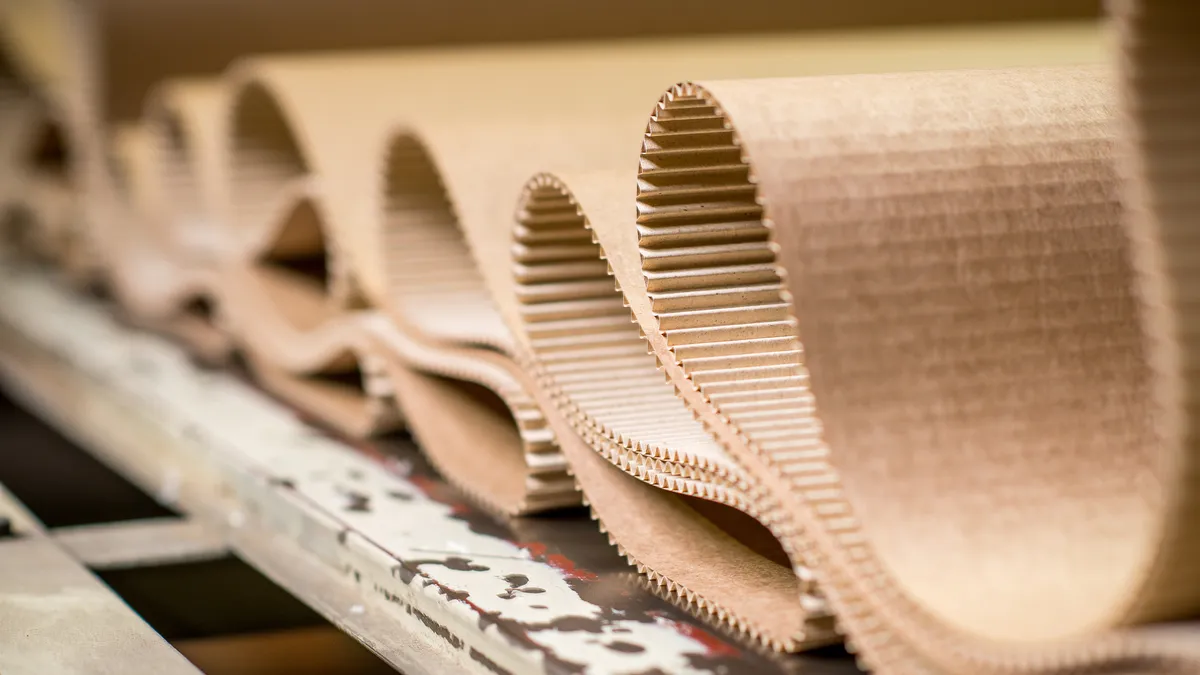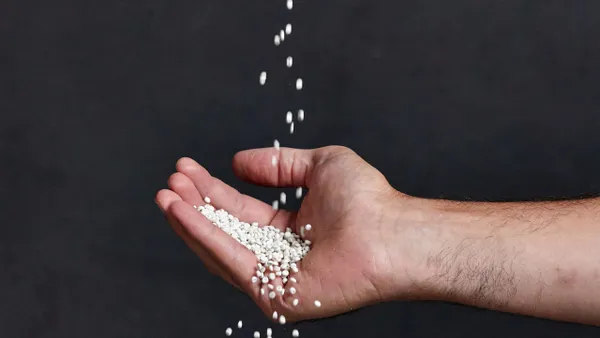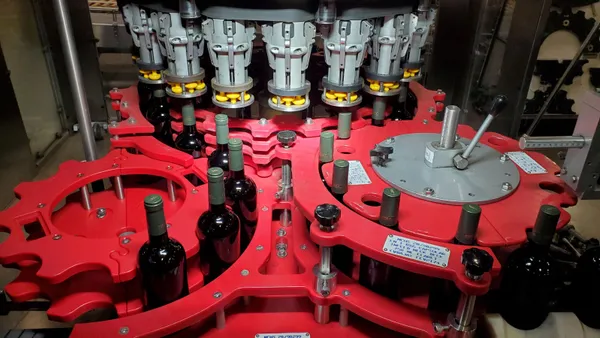The corrugated packaging industry reduced its environmental impacts and is working toward science-based sustainability goals, according to a report released last week showing the results of a life cycle assessment for corrugated packaging.
Emissions generated from corrugated packaging production dropped 50% from 2006 to 2020, according to data in the cradle-to-grave life cycle assessment of the average corrugated box made in the U.S. in 2020. Reductions also occurred for ozone depletion (13%), energy usage (13%) and water usage (18%).
"Overall, the corrugated packaging industry has substantially reduced its impact on the environment since 2006," Terry Webber, vice president of industry affairs at the American Forest and Paper Association, said during a webinar last week introducing the new LCA. “We are proud to be one of the first manufacturing industries to set comprehensive, quantifiable, industry-wide sustainability goals. ... [which] work hand-in-hand with the sustainability goals that many individual companies have set and that are a key driver of the progress you see in this life cycle assessment.”
Sustainability consultancy Anthesis and the National Council for Air and Stream Improvement prepared the report for the Corrugated Packaging Alliance, a joint venture of AF&PA, Fibre Box Association, The Independent Packaging Association (AICC) and TAPPI (Technical Association of the Pulp and Paper Industry). The group first began conducting life cycle assessments in 2006, with updates in 2010 and 2014. The newly released version covers data from 2020 and considers stages of containerboard production from pulp making to end-of-life management.
“LCAs like ours are important to ensure access to quality data about the industry,” Rachel Kenyon, senior vice president at the Fibre Box Association, said during the webinar. In addition to helping the industry itself, the information goes into the U.S. Life Cycle Inventory Database to help other companies and industries with their sustainability data, she said. For instance, “it helps consumer brands and retailers track progress and sustainability goals and accurately recognize the sustainability contributions of the corrugated packaging industry,” Kenyon said.
Webinar speakers said improvements in the 2020 data are attributable to a number of factors, including sustainably managed forests, a shift from coal and oil fuel to natural gas, improved production facility energy efficiency and the industry’s high recycling rate. The OCC recycling rate reached 90.5% in 2020, up from 89.5% in 2019 and 85% in 2010.
AF&PA used its traditionally calculated OCC recycling rate to arrive at the recycling rate in the LCA. AF&PA releases that recycling data every year, but this year the organization also released an alternative calculation, the effective recycling rate. That rate is designed to give a better sense of the total fiber available for recycling and includes imported product packaging, which is not part of the traditional OCC recycling rate.
"The reason we're not using that [effective] rate for the purposes of this LCA is because the scope of this one is for the U.S. industry average corrugated box," Webber said. “Consumer imported product packaging is not within the scope of the LCA.”
The LCA is beneficial because “it captures our system complexities of our value chain and allows individual companies to then benchmark their performance against our industry averages,” Kenyon said.













